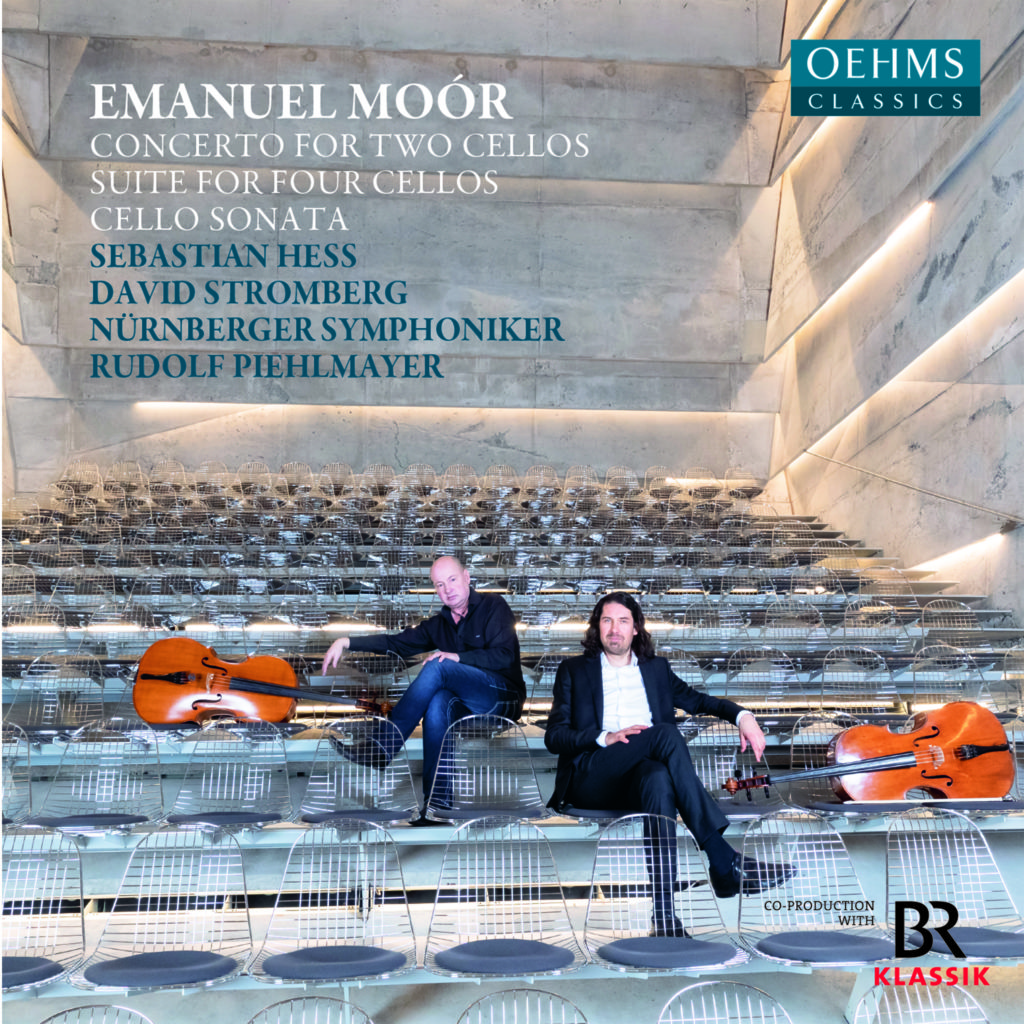 English version
English version
“Emanuel Moor is a forgotten genius” is written in the booklet of the album of German cellists David Stromberg and Sebastian Hess. The musicians presented a concerto for two cellos and orchestra in D major op. 69, recorded in collaboration with the Nurnberger Symphoniker conducted by Rudolf Piehlmayer. The concerto is dedicated to Pablo Casals and Guilherminia Suggia. They became its first performers. Casals enthusiastically wrote to Moor about the success of this epic-romantic work in Moscow. The concerto performed by David Stromberg and Sebastian Hess amazes with its melodic beauty and depth. His music is saturated with lyricism and drama at the same time. All four of its parts breathe emotions. The expressive lines of the main parts, harmonic unity, delicacy and pressure, breadth of breath and then severity, perfect interaction between the two parts leave no doubt about the genius of Moor as a composer who writes with detailed knowledge of the instrument he chose as soloing, or rather two of soloing. This is the third record of a double concerto. There were not too many “live” performances of this cello masterpiece in the entire history of its existence.
Sonata for Cello and Piano in A Minor op. 53 was written by Moor in 1901, before meeting Pablo Casals, and was dedicated to cellist Ludwig Lebell. Here Moor again appears before the listener as a refined melodist. The cello part on the album was recorded by David Stromberg, piano – by Estonian pianist Irina Zahharenkova. An ideal sound balance between two different timbres, dialogue within solidity, individual filigree in interaction – this is how one may briefly characterize the sonata introduced by these musicians.
The Suite for four cellos in C major op. 95 completes the CD, being performed by German cellists David Stromberg, Niklas Eppinger, Sebastian Hess and Canadian cellist Karina Reeves. The suite is dedicated to Pablo Casals, Andre Hekking, Joseph Salmon and Diran Alexanian. They first performed it publicly. To create just a decent piece for four identical instruments playing in the same register is a very complicated matter, even for a genius. But Moor did an excellent job. The presented suite interpretation shows unlimited possibilities for the cello. On the album, the parts of four cellos sound like completely different instruments with their own unique timbre. At the same time, there is an accurate sense of performance unity. It is as if someone were playing four hands on the same singing instrument with a very clean sustain pedal. The four parts of the suite reflect different moods. Still, overall, there are more light and rainbow shades than in the double concerto.
This album, in fact, discloses the music of Emanuel Moor to the general public. Romantic freedom is combined with verified counterpoint and impeccable harmonic vision, and the melodiousness of those refers to the classicism era. The idea of recording Moor’s cello works belonged to David Stromberg. It received the support of fellow musicians. And now he would like to return Moor’s music to the stages of concert halls, and in particular to repeat the success of the Concerto for two cellos in Moscow. Who knows, these dreams may come true in the nearest future.